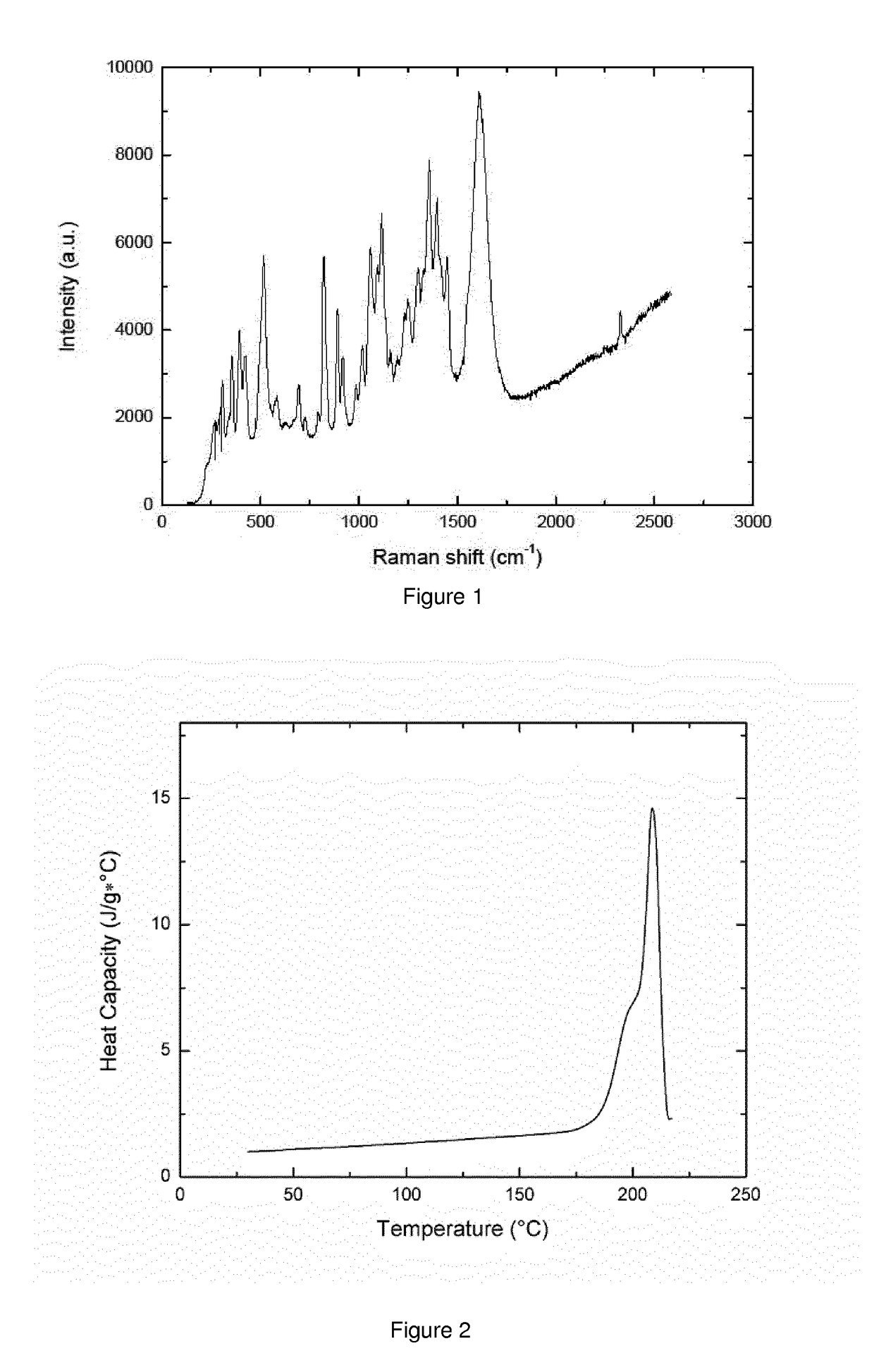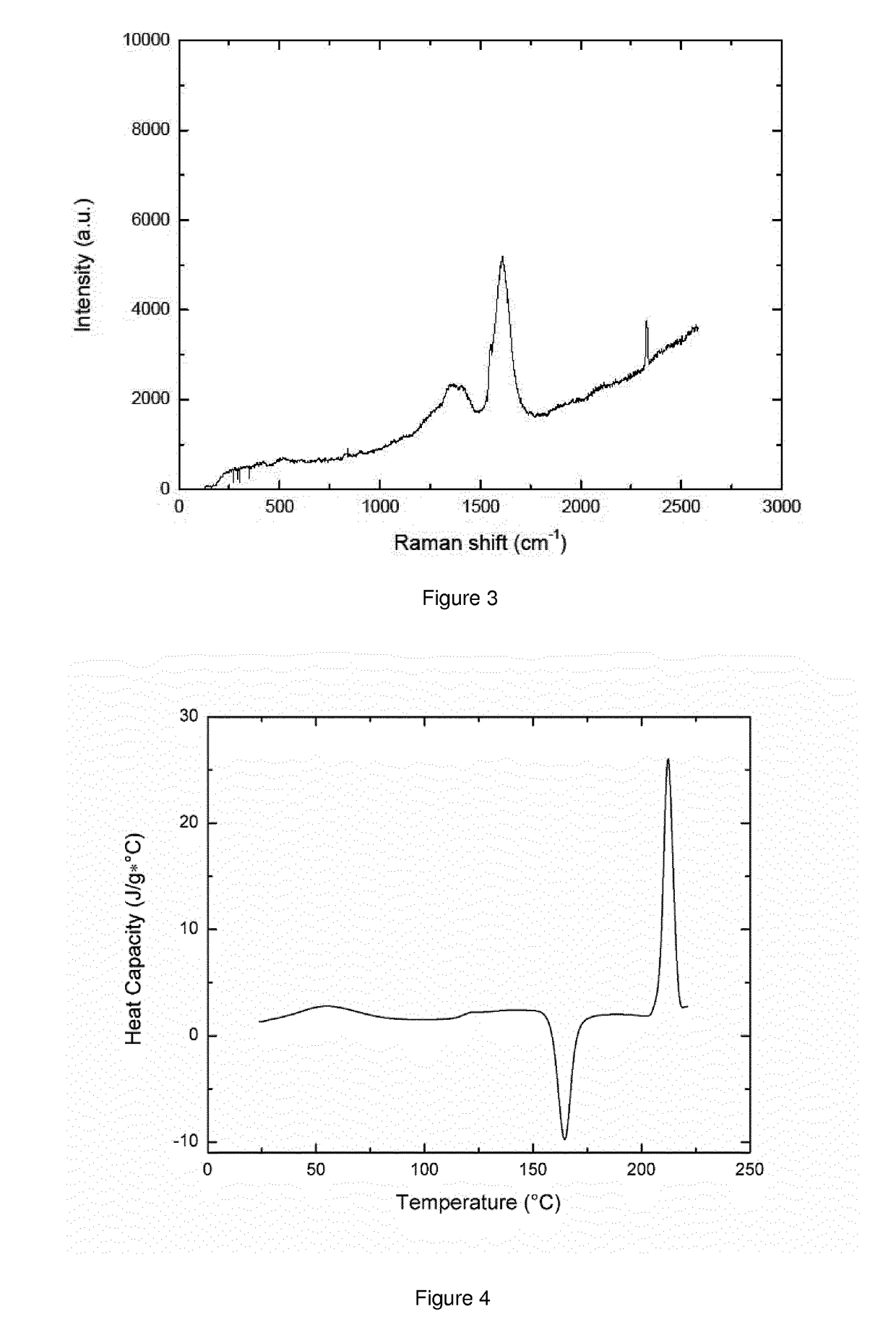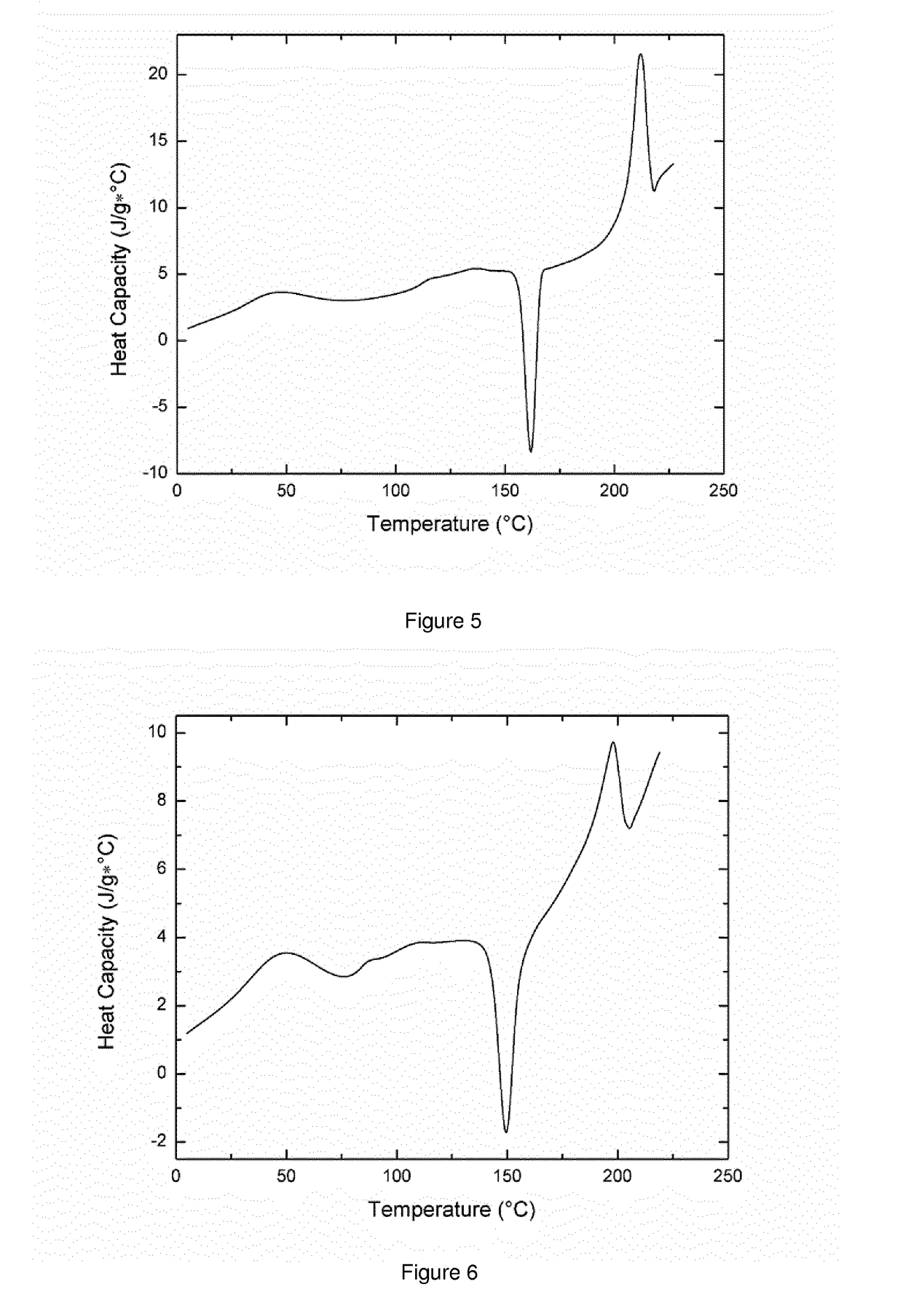Preparation of solid amorphous substrates for dnp
a technology of solid amorphous substrates and dnp, which is applied in the field of dynamic nuclear polarization (dnp), can solve the problems of reducing substrate concentration, introducing toxicology issues and metabolic interferences, and distorting metabolic in vivo assays, and achieves the effect of enhancing the nuclear polarization of its nmr active nuclei
- Summary
- Abstract
- Description
- Claims
- Application Information
AI Technical Summary
Benefits of technology
Problems solved by technology
Method used
Image
Examples
example 1
Preparation and Characterization of a Milled Trehalose Sample for DNP
Raman and Calorimetric Measurements on a Crystalline (β) Trehalose
[0140]Two aliquots of crystalline β-Trehalose have been analyzed respectively by means of Raman Spectroscopy and Differential Scanning calorimetry, giving the results in FIGS. 1 and 2. The Raman spectrum is recorded at room temperature and is characteristic of a highly crystalline material. The thermogram shows no other peak but the melting of the crystalline material starting at about 185° C.
[0141]Preparation and Characterization of Milled Trehalose Sample for DNP
[0142]A mixture of crystalline Trehalose and crystalline TEMPO has been co-milled for 12 h at room temperature. In particular samples with radical concentration in the mixture of 0.15, 0.34, 0.50, 0.64 and 0.81% (w / w) have been prepared.
[0143]The milled sample with 0.50% of TEMPO has been analysed by means of Raman Spectroscopy and Differential Scanning calorimetry, giving the results in FI...
example 2
Preparation and Characterization of a Milled Lactose Sample for DNP
[0144]A mixture of crystalline Lactose and crystalline TEMPO has been co-milled for 12 h at room temperature; the radical concentration in the mixture is 0.48% (w / w).
[0145]The resulting sample, analyzed by means of Differential Scanning calorimetry (FIG. 5), presents a glass transition temperature around 110° C., characteristic of the disordered state of the Lactose matrix, which thereafter undergoes cold-crystallization and subsequent melting upon further heating.
example 3
Preparation and Characterization of a Co-Milled Lactose-Glucose Sample for DNP
[0146]A mixture of crystalline Lactose, crystalline Glucose and crystalline TEMPO has been co-milled for 12 h at 12° C.; the radical concentration in the mixture is 0.60% (w / w) while the ratio between the Glucose and Lactose masses is 1:4.
[0147]The resulting sample, analyzed by means of Differential Scanning calorimetry (FIG. 6), presents a glass transition occurring at around 80° C. consistent with a disordered phase composed by Lactose and Glucose.
PUM
 Login to View More
Login to View More Abstract
Description
Claims
Application Information
 Login to View More
Login to View More - R&D
- Intellectual Property
- Life Sciences
- Materials
- Tech Scout
- Unparalleled Data Quality
- Higher Quality Content
- 60% Fewer Hallucinations
Browse by: Latest US Patents, China's latest patents, Technical Efficacy Thesaurus, Application Domain, Technology Topic, Popular Technical Reports.
© 2025 PatSnap. All rights reserved.Legal|Privacy policy|Modern Slavery Act Transparency Statement|Sitemap|About US| Contact US: help@patsnap.com



